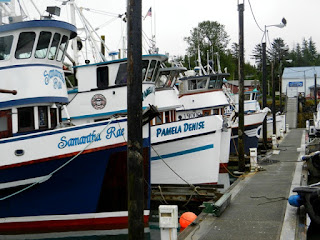 |
| Cholmondeley Sound |
 |
| Bronaugh Islands |
 |
| Approaching Metlakatla |
 |
| Metlakatla, Annette Island |
 |
| Father William Duncan |
 |
| Metlakatla Packing Plant |
 |
| Fishing Fleet, Metlakatla |
 |
| One of Several Churches in Metlakatla |
 |
| 1891 Duncan Cottage, Museum in Metlakatla |
 |
| Community Docks at Metlakatla |
No comments:
Post a Comment